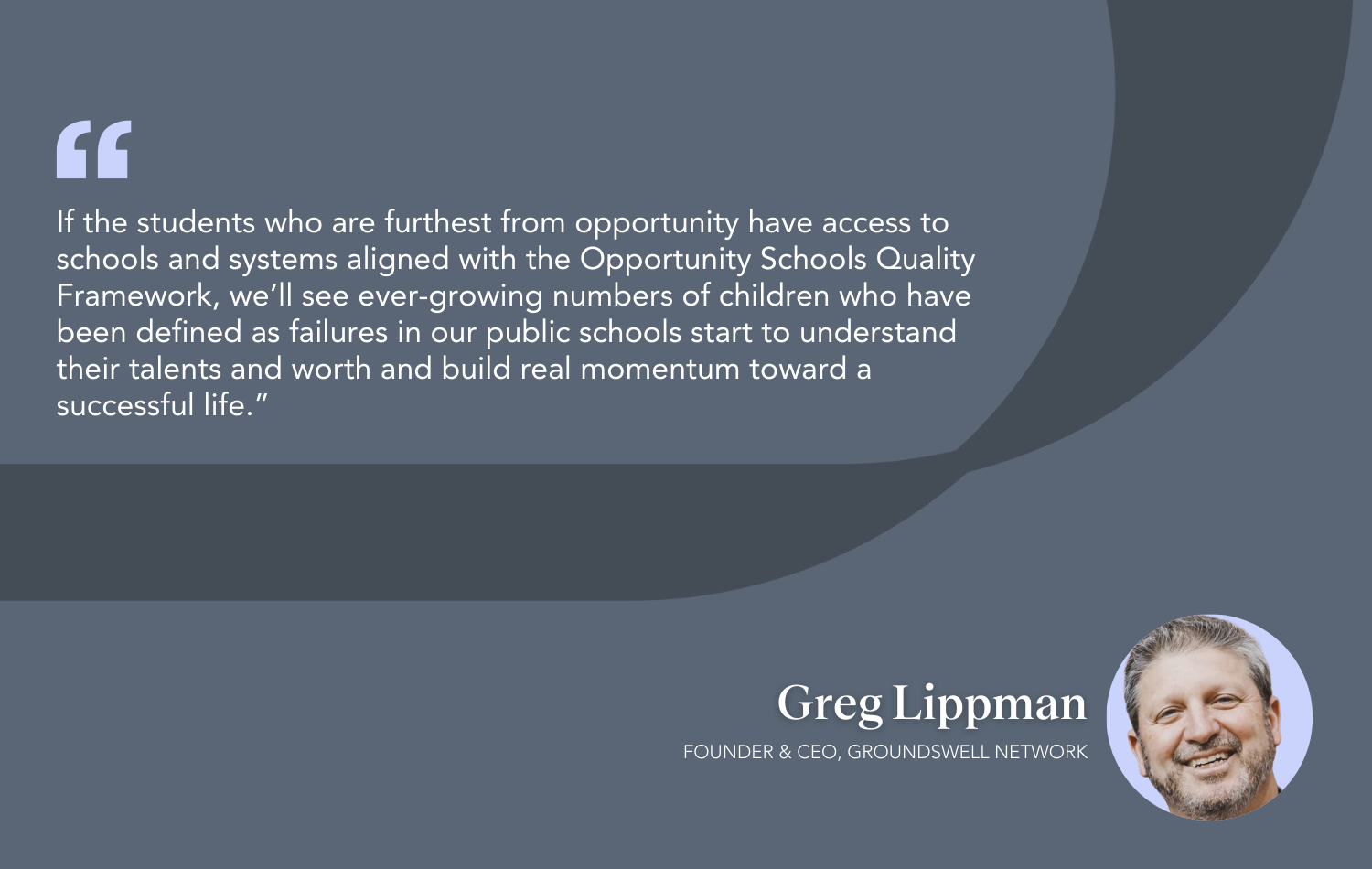While mainstream K-12 school models adequately serve most students, they don’t work for everyone: Right now, there are over 2 million high school students in the U.S. who will leave school without a diploma. The most vulnerable of these students — known by euphemisms like “disconnected youth,” “opportunity youth,” or “at-risk students” — often end up in “alternative schools,” which ought to provide options tailored to their specific needs, but rarely do.
The carefully chosen language around these students is part of an effort to cultivate positivity in an environment where tangible, measurable success can be hard to come by. In reality alternative schools are usually places that warehouse the kids that the system is unable or unwilling to serve well. These schools are simply not designed to meet these students’ needs. But Greg Lippman, the founder of Groundswell Network, believes we can do better.
Groundswell asks us to consider what it might take to provide real alternatives for students and families in the form of high-quality schools designed for them. What would it look like to have an “opportunity school” be exactly that: a school that brings opportunity to the students who are furthest from it?
In a new Opportunity Schools Quality Framework, Groundswell outlines the ways that these alternative systems and schools can serve students better. I recently sat down with Lippman to talk more about the framework and about how to help these students make a healthy transition to adulthood.
Hailly T.N. Korman: Could you describe Groundswell’s framework? What does it do and who is it for?
Greg Lippman: Our Opportunity Schools Quality Framework clearly and definitively lays out what it means to be a high-quality opportunity school, a place where students who have been furthest from opportunity thrive. It’s based on the work of some of the most innovative educators in the country, whose students — overaged and undercredited, system-involved, facing a myriad of economic and personal challenges — are transforming their lives and succeeding in school and beyond.
The goal of this framework is to be a North Star for everyone who makes consequential decisions about what happens to the students for whom the traditional system just doesn’t work. It’s not a highly technical document — there’s not an acronym to be found. Our hope is that the framework will provide a shared definition of quality that’s useful to anyone who wants to see much, much more success for students who don’t fit in at conventional schools.
HK: What problem are you trying to solve with this work?
GL: Right now, over 2 million students in the U.S. are in high school but will not graduate. The national shortage of good options for these students has a serious societal cost. We spend far more on the consequences of a system that doesn’t have enough opportunity schools than what it would take to make sure that our public school systems all include places where the most challenged young people get the skills and self-belief to live healthy, productive lives.
Even so, there are reasons for optimism, because there are really outstanding schools scattered across the country that have demonstrated transformative impact. The next step is making these opportunity schools the rule rather than the exception, and this framework is a tool for educators and sector leaders who are committed to that effort.
HK: If this framework were broadly applied, what do you think would change for students?
GL: We’re actually in a fortunate moment: As the pendulum swings back from the “college for all” approach towards a broader definition of success, there’s increasing interest in and understanding of what opportunity schools can provide for communities. If the students who are furthest from opportunity have access to schools and systems aligned with the Opportunity Schools Quality Framework, we’ll see ever-growing numbers of children who have been defined as failures in our public schools start to understand their talents and worth and build real momentum toward a successful life.
HK: The materials are written expansively, but Groundswell is really focused on opportunities for the charter sector. What do you think about the role that choice plays in better serving all students?
GL: As someone who helped found my first charter school 25 years ago, I’m very aware of the power of choice. I had a chance to be in public schools as the choice revolution began and flowered, and it’s very clear to me that, overall, increased parent choice has meant and continues to mean a lot of good things for all students and families.
So far, the choices that the charter sector has offered to families have mostly been schools that offer parents options where students reach traditional benchmarks of quality: high student achievement in comparison to similar students in the traditional system, college success for first-generation students, etc.
Now, it’s time for the charter sector to expand choice to include families with children headed toward catastrophic failure in school, or sometimes worse. The charter movement that I joined is justly proud that we’ve provided quality options in neighborhoods where there were none, but at the same time, it’s time to grapple with the fact that for the families of the most at-risk children, we have not yet offered compelling options at anywhere near the scale needed.
